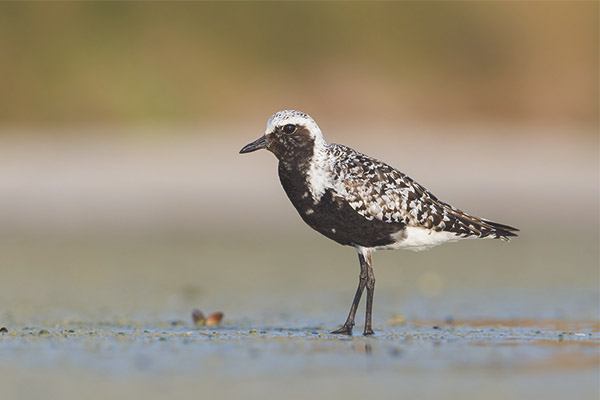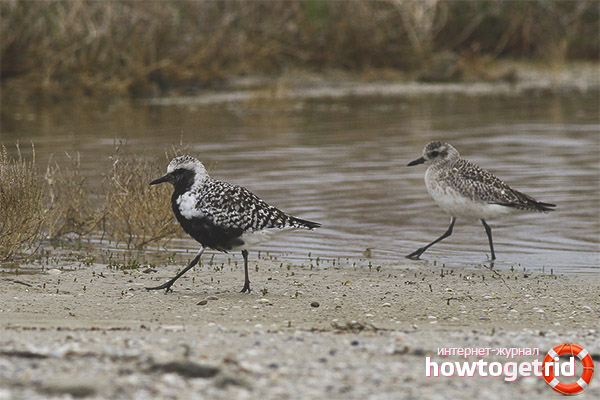The content of the article
Toules is a medium-sized bird belonging to the plover family. The main nesting place is the northern regions of Russia and Canada. The migration of this bird is spreading all over the world, mainly coastal areas. The peculiarity of the species is that its representatives are capable of making significant in terms of their duration and complexity, flights without rest breaks. They land only for two reasons - for feeding or because of rather adverse weather conditions.
Description of the species
The body length of an adult individual of the tulles reaches 30 cm and weighs up to 350 grams. The wingspan is up to 75 cm. The paws of the body are gray, the color of the short beak is dark. There is a 4th toe on the paws, which distinguishes this bird from other members of the plover family.
The color of the plumage of the tulles is monochromatic - dark (in females - brown in males - black), with a white undertail, with white streaks on the back of the bird. This outfit bird is spring and summer.
The period of change of dress (molt) falls on the end of summer - the beginning of autumn. Winter outfit is wearing tulles until the beginning of April. This plumage is characterized by a simple gray color of bird feathers, white belly color and gray chest, covered with dark patches. The plumage of young individuals of the tulles almost completely copies the winter adult outfit and, as a rule, young animals wear such an outfit throughout the first year of their life.
Nutrition features
Note that for the implementation of feeding, tulesy, as a rule, prefer loneliness, this suggests that representatives of the species do not create the so-called fodder flocks. However, it has been observed that if there is a lot of food in the feeding areas, the birds can be grouped into small groups.
While hunting for prey, they run quickly, having seen a suitable animal for feeding, suddenly stop and grab it with their beak. Vegetable and animal food from the water is simply caught or taken out by the beak in shallow water.
Breeding
The time to reach maturity of the tulles is about two years. The birds are monogamous, that is, they form pairs that hold together for several years. Place for nesting - the earth's surface in the open tundra. As a rule, in a colony of birds the distance between the nests is up to 500 meters.
The nest of the tulesa itself is a small depression in the soil, often lined with vegetation such as lichen and wild rosemary. The nesting period for pairs of Toules individuals occurs during the period from the end of May to the beginning of July. The average number of eggs in the clutch of the tules is about 3-4 pieces. The process of brooding is carried out by both parents of the future offspring (about a month). Bird chicks are fully fledged — about 1.5 months after the spitting. The average life span of a tules in its natural habitat is no more than 18–20 years.
Conservation status
Due to the fact that the population of the tulles is spread over a fairly large area (17 million 300 thousand sq. Km.), The number of this species of feathery plover family has not yet reached critical thresholds. However, in recent years, ornithologists have noticed a rather pronounced downward trend, albeit at a slow pace. For this reason, the bird has received a status that causes the public environmental organizations to fear for the species due to the threat of extinction. Note that the relevant Agreement extends to this species of birds, implying protection and their preservation in the wild.
Interesting facts about tules
This migratory bird often keeps together with its pair exclusively in the period of nesting, breeding and feeding of offspring, all the rest of the time it prefers to lead an independent lifestyle.
The largest population of Tulesa is in Eurasia, it is an area characterized by high humidity.
Representatives of the species have a beautiful and melodic voice.During the period of tokens, the male performs a resounding song, consisting of several parts - separate flute whistles and a leisurely trill, repeated several times.
Video: Tules (Pluvialis squatarola)












To send